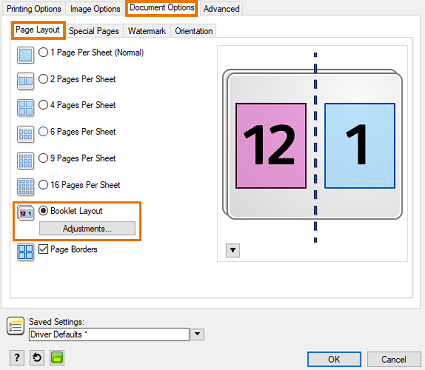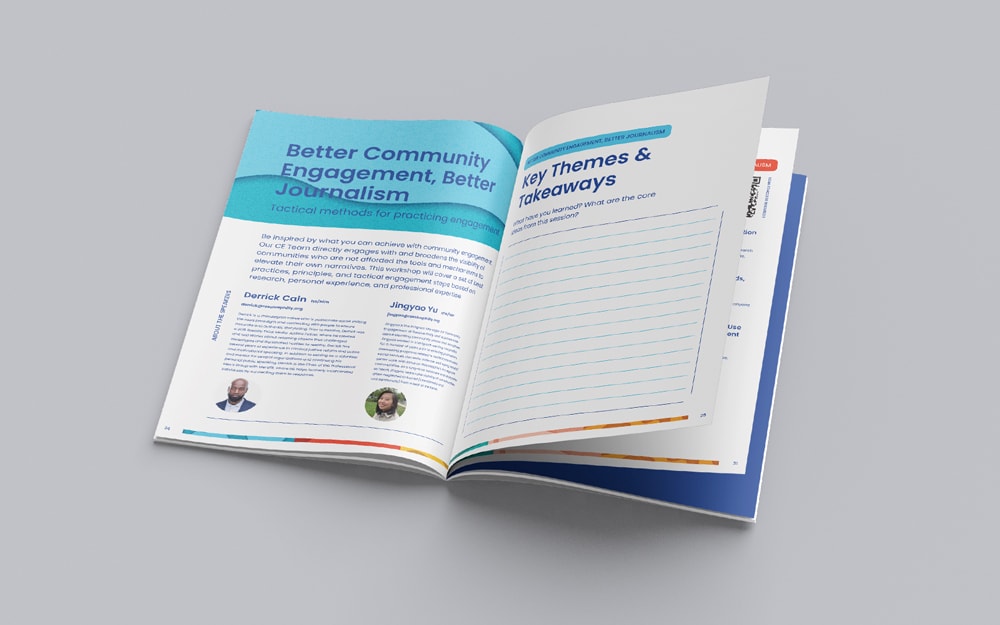Booklet Printing FAQs: Everything You Need to Know Before You Order
Booklet Printing FAQs: Everything You Need to Know Before You Order
Blog Article
The Essential Guide to Comprehending Pamphlet Printing Options and Techniques
The process of pamphlet printing entails several considerations that can considerably impact the last product. From choosing the proper format and dimension to understanding the nuances of binding techniques, each selection plays a crucial function. Additionally, aspects such as paper supply and printing techniques additional affect the performance of the pamphlet. As one navigates these alternatives, it becomes critical to comprehend just how they adjoin and what that suggests for the overall end result.
Recognizing Booklet Styles and Sizes
When taking into consideration brochure printing, understanding the different layouts and dimensions readily available is crucial for achieving the wanted presentation. Booklets can be produced in numerous styles, consisting of saddle-stitched, spiral-bound, and perfect-bound, each offering distinctive advantages. Usual sizes range from conventional letter (8.5 x 11 inches) to smaller alternatives like A5 (5.8 x 8.3 inches), enabling flexibility based upon web content and target audience.Selecting the proper dimension can affect both the design and reader interaction. Bigger dimensions might suit aesthetically driven web content, while smaller sized formats may be more portable and straightforward. Furthermore, the variety of web pages affects the option of binding method, as thicker brochures may need tougher bindings. Eventually, understanding these elements enables a more customized method, making sure that the final product straightens with the intended message and aesthetic, boosting the total performance of the interaction.
Choosing the Right Paper Supply

Binding Methods: Options and Factors To Consider
When it concerns binding methods for pamphlets, several choices are offered, each with distinctive advantages. Saddle stitch binding uses a cost-effective option for thinner pamphlets, while perfect binding strategies supply a more refined search for thicker publications. Wire-O binding attracts attention for its durability and convenience of use, making it ideal for records that require flexibility.
Saddle Stitch Binding
Saddle stitch binding supplies a practical and economical service for assembling brochures, making it a popular selection amongst businesses and authors. This binding technique entails folding sheets of paper in half and stapling them along the fold line, developing a well organized and cool look. Usually ideal for booklets with a reduced page matter, saddle sewing is suitable for magazines, pamphlets, and educational materials. The simpleness of this method enables for fast manufacturing and is typically favored for short runs or marketing items. It is essential to keep in mind that saddle stitch binding may not be ideal for thicker pamphlets, as the back may not hold up under increased weight. In general, it stays a dependable option for several printing tasks.
Perfect Binding Techniques
Perfect binding is a commonly made use of technique that offers a specialist and refined coating to brochures and magazines. This approach includes gluing the web pages with each other at the spinal column using a strong adhesive, permitting a clean edge and the capacity to hold a larger variety of pages compared to saddle stitching. Perfect binding is especially appropriate for thicker booklets, such as directories and annual records, where a sturdy, level spinal column is wanted. Additionally, it provides the alternative for a printed cover that can be created to boost visual allure. Considerations such as web page matter, paper weight, and the intended usage of the booklet should be taken into account, as they can impact longevity and overall top quality.
Wire-O Binding Alternatives
Wire-O binding, recognized for its sturdiness and adaptability, supplies an excellent option for pamphlets that need very easy web page transforming and a specialist look. This binding technique utilizes a collection of steel loopholes that hold web pages safely, enabling them to lie flat when open. It is especially appropriate for handbooks, presentations, and brochures due to its robust nature. Wire-O binding is available in numerous shades and diameters, suiting various page matters and densities. Furthermore, it allows the incorporation of covers and tabs, enhancing the pamphlet's general aesthetic. Factors to consider for Wire-O binding include the choice of cord color, the size of the loopholes, and the extent of customization wanted, all of which can greatly influence the end product's look and capability.
Digital vs. Offset Printing: Which Is Best for You?
When choosing a printing technique for booklets, recognizing the differences in between digital and counter printing is necessary. Digital printing utilizes modern-day technology to generate premium prints quickly and economically, making it perfect for brief runs or projects needing fast turnaround times. It enables customization, supplying the ability to publish on-demand with marginal waste.In contrast, balance out printing is a traditional technique that masters creating huge amounts with consistent top quality. It entails transferring ink from a plate to a rubber covering, after that to the paper, which results in lively shades and precise details. Nonetheless, offset printing usually calls for longer setup times and is much more economical for bigger volumes.Ultimately, the choice between digital and balance out printing relies on task requirements, budget, and preferred amount. For small, time-sensitive projects, digital could be the finest option, while balanced out may be more effective for bigger, top notch manufacturings.

Designing Your Booklet: Tips and Ideal Practices
When creating a brochure, careful focus to design, font style selection, and shade use can considerably enhance its effectiveness. A well-structured format guides the reader's eye, while ideal font styles guarantee readability and share the preferred tone. Additionally, reliable use of shade can evoke feelings and emphasize essential details, making the general design a lot more impactful.
Choosing the Right Format
Exactly how can one effectively select the best format for a brochure? It is important to examine the booklet's function and target audience. A clean, organized format enhances readability and involvement. Utilizing a grid system can help in straightening aspects continually, creating an expert look. Additionally, including visual pecking order via varying sizes and positionings of photos and text can assist the viewers's eye and emphasize essential details. It is also important to leave enough white room, which avoids overcrowding and permits for far better focus. Checking different designs through mock-ups can give insight right into how the layout carries out in real-world scenarios, guaranteeing that the final product meets both aesthetic and functional needs. Practical Picking Ideal Font Styles
A well-chosen font can substantially improve the total layout of a brochure, enhancing the layout and strengthening the content's message. The choice of typefaces need to consider readability, especially for body text, as it assures the info comes to all visitors. Sans-serif typefaces are usually preferred for digital layouts, while serif typefaces can offer a typical feeling in printed materials. It's suggested to limit font options to two or three to keep aesthetic comprehensibility. In addition, font style size plays an essential function; headings need to be not overwhelming but unique, while body text ought to fit for analysis. When selecting font styles, positioning with the brochure's theme and target audience is important for effective interaction and visual charm.
Reliable Use of Color
Color acts as an effective device in booklet design, directing and forming understandings viewers emotions. It can evoke feelings of depend on, excitement, or peace, relying on the tones selected. Developers must consider color theory concepts, making sure that the picked scheme lines up with the brochure's message and target audience. Utilizing cozy colors like red and orange can produce urgency, while cooler tones like blue and eco-friendly foster tranquility.Additionally, contrast plays a crucial role; corresponding shades can boost readability and visual charm. Uniformity in color usage throughout pages further enhances brand name identity and communication. Inevitably, efficient shade implementation not only captures attention address but also strengthens the brochure's objective, making it an important aspect of effective design.
Ending Up Touches: Coatings and Special Effects
While several consider the web content and design of a brochure one of the most crucial components, the ending up touches, such as layers and unique impacts, play an essential function in enhancing its total appeal. Coatings can provide defense and longevity, guaranteeing that the pamphlet withstands click here for more damage. Matte finishes supply a sophisticated, non-reflective surface, while shiny coatings can make colors appear even more vivid and attractive. Special impacts, like embossing or aluminum foil marking, add a responsive measurement that can produce a memorable impression. These methods can highlight specific areas, accentuating important details or producing aesthetic passion. Additionally, UV layer can supply a high-shine surface that raises the overall look.Together, these finishing touches not only improve the pamphlet's aesthetic however also communicate professionalism and trust and focus to information, ultimately leaving an enduring effect on the viewers.
Price Factors To Consider for Brochure Printing
Understanding the numerous expense factors to consider for brochure printing is essential for companies and companies aiming to maximize their spending plans. Secret elements influencing prices consist of the selection of ink, binding, and paper approaches. Better materials, such as premium paper or specialized inks, typically boost the general expense. Furthermore, the size and page count of the booklet play a considerable function; larger booklets need even more resources and time to produce.Another important consideration is the printing technique, whether electronic or offset, as each has its own pricing framework and suitability for various quantities. Companies need to likewise factor in layout expenses, which can vary based upon intricacy and the usage of professional solutions. Ultimately, shipping and handling fees can include in the overall, specifically for huge orders. By reviewing these components, companies can make educated choices that align with their financial capabilities while achieving the preferred quality in their published products.
Regularly Asked Inquiries
What Are the Ecological Influences of Brochure Printing?
The environmental influences of brochure printing include logging from paper manufacturing, carbon exhausts from transportation, and waste generation from thrown out materials - Booklet Printing. Lasting methods, such as using recycled paper and green inks, can minimize these effects
Just How Can I Make Certain Shade Precision in My Pamphlet?
To ensure shade accuracy in a pamphlet, one must make use of adjusted screens, use expert shade profiles, carry out test prints, and choose premium printing services that offer shade matching and proofing choices for finest results.
What Is the Normal Turn-around Time for Brochure Printing?
The normal turnaround time for brochure printing varies relying on the intricacy and amount - Booklet Printing. Generally, it varies from a couple of days to 2 weeks, influenced by factors such as publishing approaches and completing demands
Are There Minimum Order Quantities for Brochure Printing?

Can I Print Pamphlets in Multiple Languages?
Publishing brochures in several languages is feasible. Several printing services offer choices for multilingual or multilingual layouts, permitting reliable communication. Mindful preparation guarantees that design aspects accommodate various languages without compromising readability or aesthetic appeals. In addition, variables such as paper stock and printing techniques additional influence the effectiveness of the brochure. When considering pamphlet printing, recognizing the numerous styles and sizes readily available is necessary for attaining the desired presentation. When choosing a printing approach for pamphlets, comprehending the distinctions in between digital and offset printing is crucial. In addition, the dimension and web page matter review of the brochure play a considerable duty; larger brochures need more sources and time to produce.Another crucial factor to consider is the printing method, whether electronic or balanced out, as each has its very own prices framework and suitability for various amounts. The ecological effects of booklet printing include logging from paper manufacturing, carbon exhausts from transportation, and waste generation from thrown out materials.
Report this page